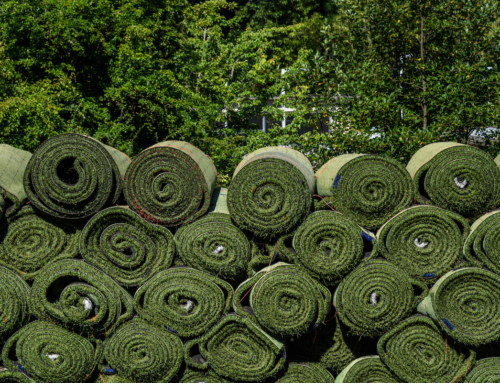Last Updated on May 11, 2023 by ReTurf
Artificial turf has been gaining some serious ground in the landscaping scene these past few years. And why wouldn’t it? It doesn’t require watering, doesn’t need to be mowed, it always looks lush and green, and with modern technology, it can look and feel just like the real deal.
But with all the recent advances in synthetic turf technology, where are all the recycled artificial grass options? Well, that’s where things get interesting. See, beyond artificial turf’s lush, green, and seemingly simple surface, there’s actually a complex system at work.
And thus the recycling of artificial turf, owing to its complicated makeup, poses some interesting challenges. Yet despite these challenges, the drive towards development of more 100% recyclable turf products has never been stronger.
In this deep dive into the field of recycled artificial grass we’ll cover everything under the sun and leave no stones unturned (all puns intended). We’ll look at its composition, the complexities of recycling, and what’s currently out there as far as recyclable artificial grass products.
The Intricacies of Artificial Turf Recycling
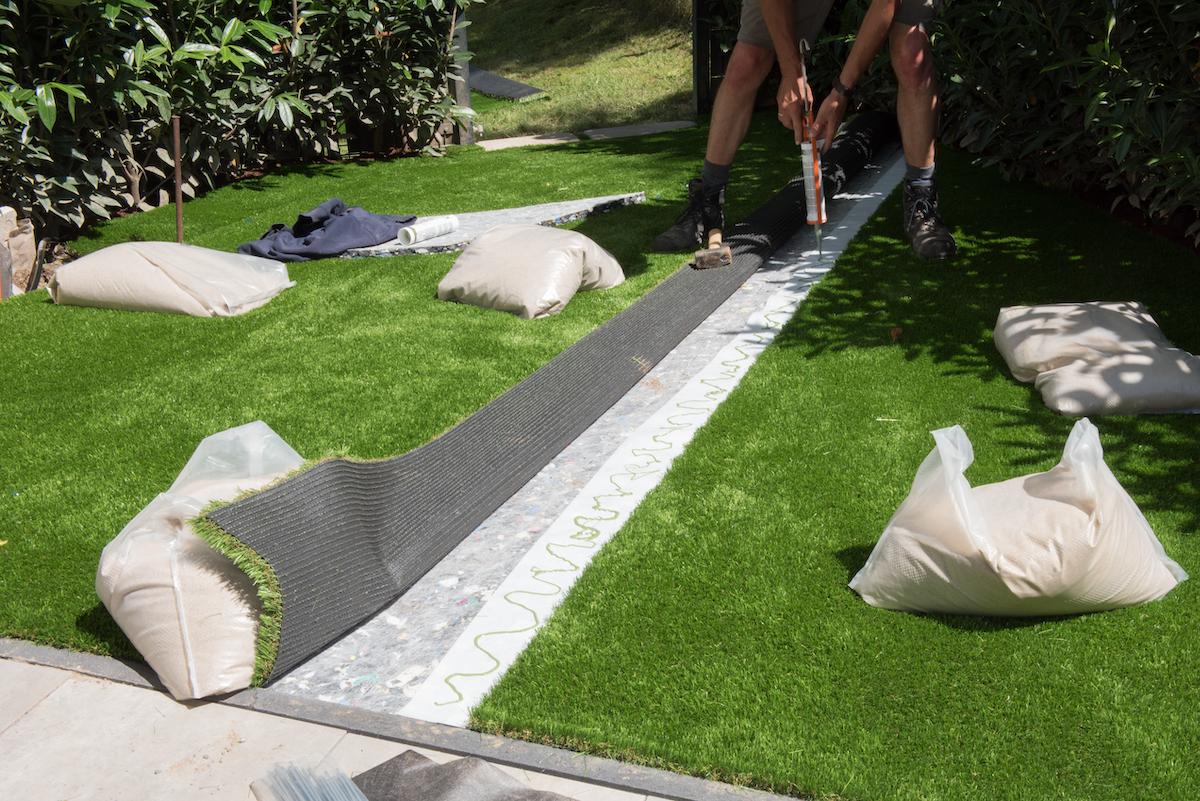
Artificial turf, or fake grass, is a lot like a layered cake. Each layer is made from different materials and has its own purpose:
- The top layer, which looks like grass, is usually made from plastic fibers. These faux grass blades can be made from a few different materials: polyethylene, polypropylene, or nylon. (This may also include a “sub-layer” of thatching.)
- Underneath the grassy layer, there are at least 2 more layers, which work together to hold the grass threads in place and make the turf strong and durable. These layers are also made from plastic, and sometimes a material called urethane is used, which is common in American-made fake grass.
- Adding to the complexity, there’s something called “infill” added. Turf infill can be made from a lot of different things—from crumb rubber made from recycled tires to silica sand and thermoplastics like thermoplastic elastomer (TPE) and thermoplastic olefin (TPO). There are also organic infill materials such as coconut fibers and cork.
- In some cases, there might be yet another layer under the turf for extra support and cushioning. This may be made of materials like polyurethane, ethylene-vinyl acetate (EVA), or other foam materials; as well as plastic drainage mats made of polyethylene or other plastics.
So, here’s where the tricky part comes in—recycling artificial grass. You’ve got all these different materials mixed together (plus the usual outdoor stuff like dirt, rocks, and leaves).
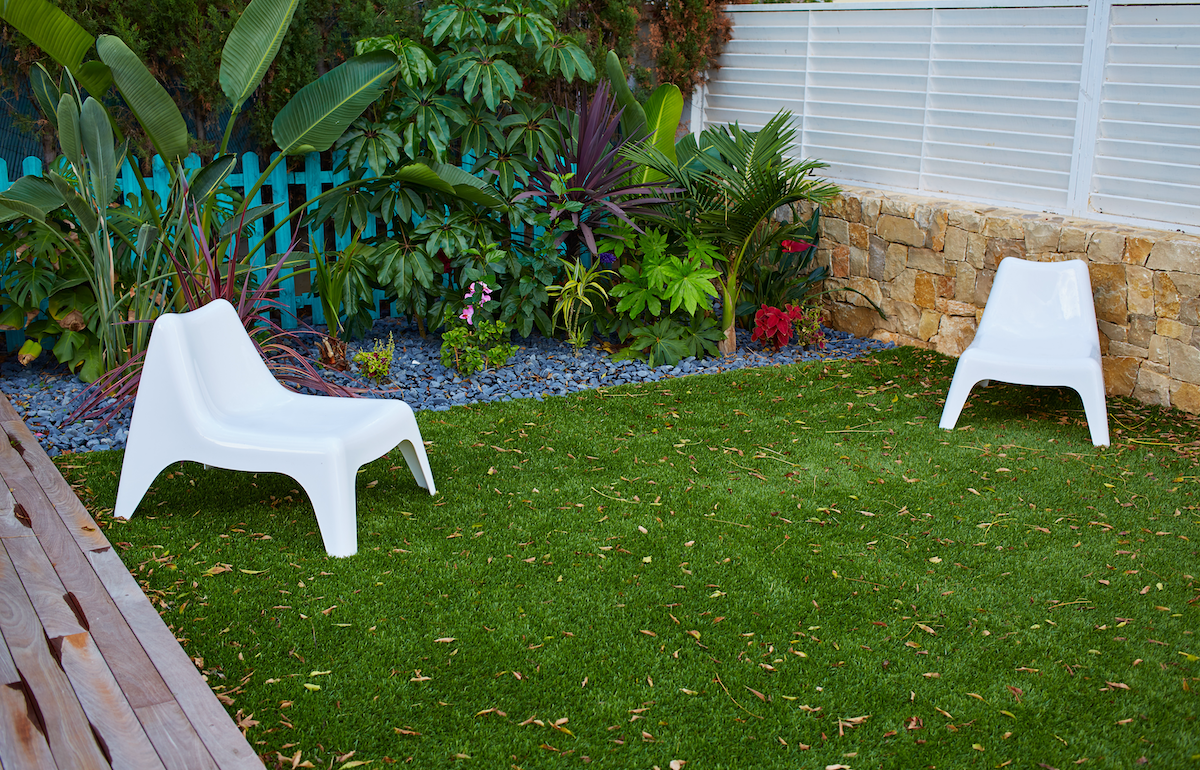
When you try to separate these materials—especially when they’ve been fused together with adhesives—it can be difficult and expensive. Fortunately, there are experts working hard on solutions to make production of recycled artificial grass more viable.
The Push for Sustainable Solutions: Recycled Artificial Grass
Despite all the challenges associated with recycling synthetic turf products, there has been a steady increase in the demand for more sustainable options. Both companies and consumers are exploring ways to repurpose artificial turf materials, leading to the growing feasibility of recycled artificial turf as a solution. Tempo Turf serves as an illustrative example of how companies are innovating in this space; they have developed a range of turf products that use Olefin fiber as the primary material.
This aligns with the increasing demand for sustainable alternatives in the landscaping sector and offers an option for consumers interested in reducing their environmental impact. The manufacturing of these products in the USA also ensures that they meet high quality standards.
New Artificial Grass (100% Recyclable)
- Tempo Turf L-73175 is a synthetic turf that is 100% recyclable and Made in the USA.
- Tempo Turf G-360375 is a putting green turf that is 100% recyclable and Made in the USA.
Used Artificial Grass (Reused/Repurposed)
While recycling involves transforming material into something new, reusing involves giving the material a new purpose without changing its form. Both are great ways to extend the life of artificial turf and reduce waste, but they involve different processes and possibilities.
Used artificial grass, recovered from large sports fields and stadiums, presents both an opportunity and a challenge. Due to its complex composition of various synthetic and organic materials, used artificial grass poses a challenge for recycling efforts. In many cases, turf materials that could potentially be re-used or recycled are needlessly discarded in landfills—where they take up a great deal of space and contribute to environmental pollution.
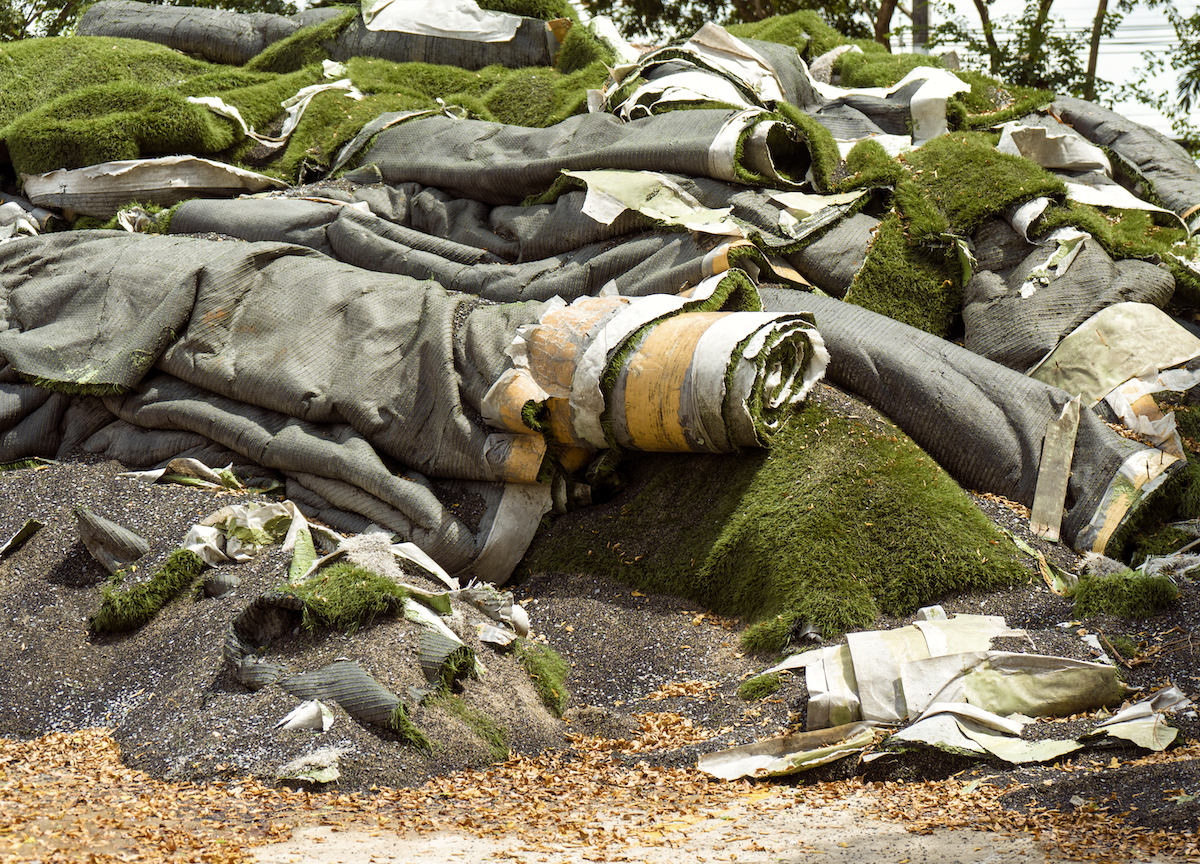
However, as a high-quality, durable product that has fulfilled its primary purpose in one location, this material still retains extensive potential for reuse or repurposing—which aligns with principles of sustainability and waste reduction just like recycled artificial grass.
The Importance of Choosing Sustainable Artificial Turf
Selecting used or recyclable artificial turf contributes to a more sustainable future in several ways.
- It minimizes waste sent to landfills, reducing environmental pollution when compared to traditional artificial turf that typically ends up in landfills at the end of its lifecycle.
- The manufacturing process of recyclable artificial grass often incorporates eco-friendly practices, such as the use of recycled materials, further minimizing environmental impact.
- Artificial turf, in general, conserves water compared to traditional grass lawns that require regular watering, a significant benefit in regions where water is a scarce resource.
- Opting for used or recyclable turf sends a powerful message to the synthetic grass industry. It signals consumer demand for more sustainable options, encouraging more companies to invest in developing environmentally friendly products.
The Role of Consumer Demand in Driving the Future of Recyclable Artificial Grass
The role of consumers cannot be overstated in promoting research and development into more eco-conscious synthetic turf options. By making informed choices and opting for recyclable artificial grass, they can significantly impact the market.
As with many industries, consumer demand drives innovation. When consumers show a preference for eco-friendly products, companies are motivated to invest in developing and refining these offerings. In other words, companies see where the wind is blowing, and they start investing more in recyclable solutions.
Your choices really do make a difference. When you decide to look for recyclable artificial turf, you’re not just making an eco-friendly choice for your property—you’re sending a signal that can shake up the market. It’s a cycle that can lead to significant advancements in sustainability. Even your choice to search for “artificial grass recycled” matters—a lot!
The Future of Artificial Grass: Looking Ahead
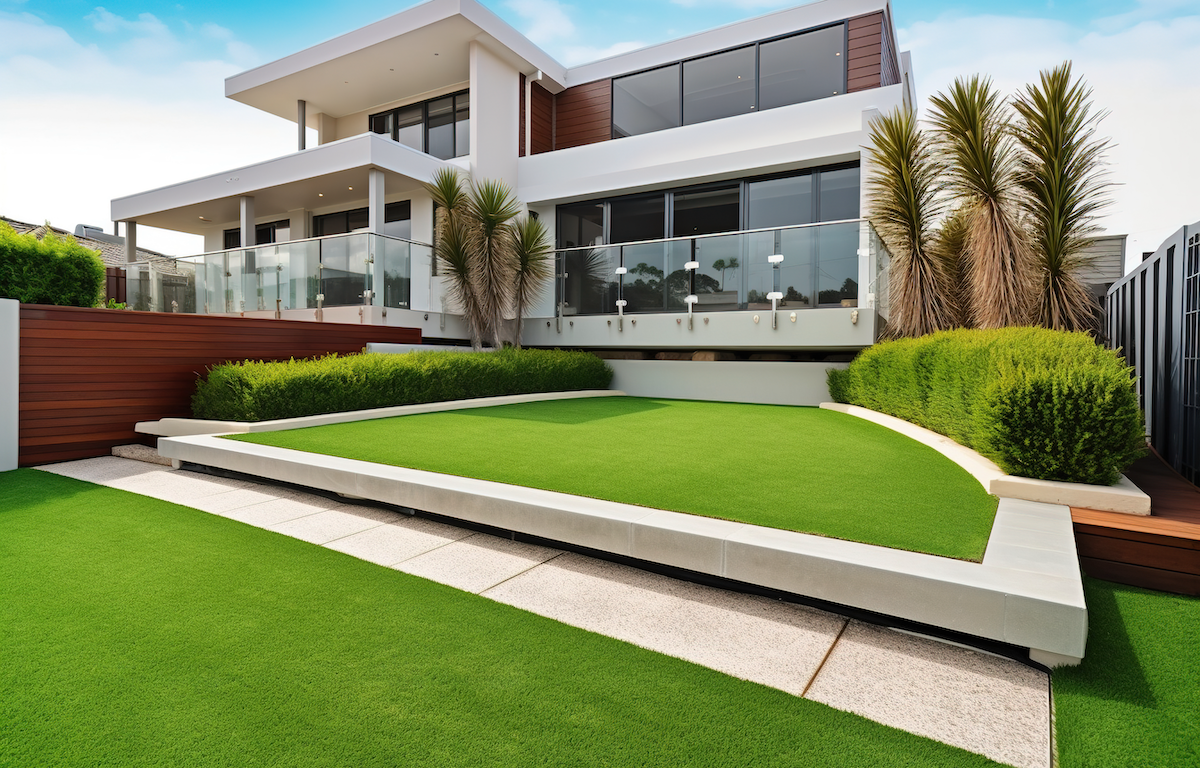
The journey towards fully sustainable landscaping practices is far from over. Continued innovations and advancements in technology are needed to make the recycling process more efficient and less costly. But with manufacturers like Tempo Turf making huge strides—and with growing consumer demand for eco-friendly products—the future of 100% recyclable artificial turf has never looked more promising.
As technology continues to evolve, we can expect to see even more advancements in the manufacturing and recycling processes. A goal is to create products that are not just 100% recyclable, but also made from a higher percentage of recycled materials, thereby reducing the need for new raw materials.
We are likely to see a growth in the number of companies offering recyclable artificial grass options as they respond to increasing consumer demand. This will lead to more competition in the market, which typically results in better products and more choices for consumers.
Research and development will likely lead to improvements in the look and feel of artificial grass. The aim is to create products that are virtually indistinguishable from natural grass in terms of appearance and texture.
Concluding Remarks
The journey towards 100% recyclable artificial grass is a shared one, and it demands the highest standards from all of us. In other words, when we choose turf products for our homes or businesses, quality, domestic manufacturing, and a focus on recyclability should be among the top considerations.
In this context, it’s worth noting the efforts of innovative manufacturers such as Tempo Turf. They are playing a significant role in shaping the future of artificial turf, offering high-quality products that are not only manufactured in the USA but also designed with recyclability at the forefront. Using 100% Olefin as the core material underlines their commitment to sustainable practices.
Furthermore, they have also thoughtfully incorporated practical features into their products, such as enhanced drainage capabilities.
ReTURF
ReTURF is the sole online retailer for these recyclable turf products and we’re proud to offer this solution for our eco-conscious customer base. You can explore current recyclable turf products here—or just keep an eye out for the recycle symbol when you’re exploring the new turf options on our site.



